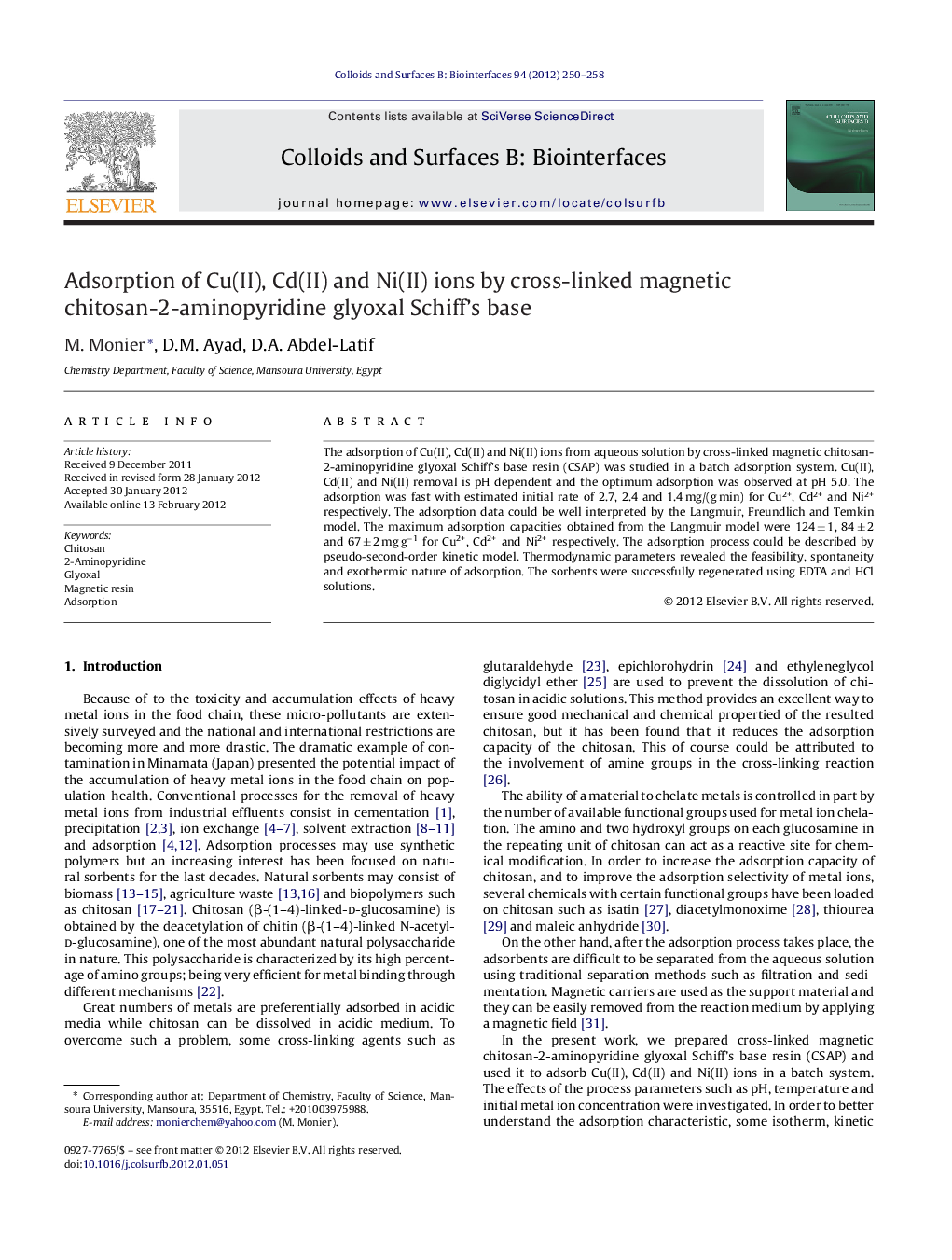| کد مقاله | کد نشریه | سال انتشار | مقاله انگلیسی | نسخه تمام متن |
|---|---|---|---|---|
| 600860 | 1454310 | 2012 | 9 صفحه PDF | دانلود رایگان |

The adsorption of Cu(II), Cd(II) and Ni(II) ions from aqueous solution by cross-linked magnetic chitosan-2-aminopyridine glyoxal Schiff's base resin (CSAP) was studied in a batch adsorption system. Cu(II), Cd(II) and Ni(II) removal is pH dependent and the optimum adsorption was observed at pH 5.0. The adsorption was fast with estimated initial rate of 2.7, 2.4 and 1.4 mg/(g min) for Cu2+, Cd2+ and Ni2+ respectively. The adsorption data could be well interpreted by the Langmuir, Freundlich and Temkin model. The maximum adsorption capacities obtained from the Langmuir model were 124 ± 1, 84 ± 2 and 67 ± 2 mg g−1 for Cu2+, Cd2+ and Ni2+ respectively. The adsorption process could be described by pseudo-second-order kinetic model. Thermodynamic parameters revealed the feasibility, spontaneity and exothermic nature of adsorption. The sorbents were successfully regenerated using EDTA and HCl solutions.
Figure optionsDownload as PowerPoint slideHighlights
► Chitosan was chemically modified through the reaction with 2-aminopyridine-glyoxal (APG) Schiff's base.
► The modified chitosan-APG cross-linked with glyoxal in presence of magnetite to produce modified magnetic resin.
► The resulted resin characterized by various instrumental methods.
► The resin was applied to remove Cu2+, Cd2+ and Ni2+ from aqueous solutions.
Journal: Colloids and Surfaces B: Biointerfaces - Volume 94, 1 June 2012, Pages 250–258